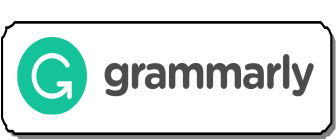Hubungan Antara Kemampuan Memahami Kitab Kuning dengan Kemampuan Lisan dan Tulisan dalam Bahasa Arab
Abstract
This research is intended to find out correlation of 1) how is ability to understanding yellow book student of Nahdlatul Wathan Tenggarong Seberang Islamic Boarding School, 2) how is oral ability in arabic language student of Nahdlatul Wathan Tenggarong Seberang Islamic Boarding School, 3) how is writing ability in arabic language student of Nahdlatul Wathan Tenggarong Seberang Islamic Boarding School, 4) how is the relationship between the ability to understand the capability Yellow Book Oral and Written in Arabic student of Nahdlatul Wathan Tenggarong Seberang Islamic Boarding School. This research belongs to quantitative correlation by taking Nahdlatul Wathan Tenggarong Seberang Islamic boarding school. Data was obtained by interview, observation, documentation and instrument. Data analysis techniques performed with the test requirements analysis to test the research hypothesis. Finding of this research show that ability to understanding yellow book student of Nahdlatul Wathan Tenggarong Seberang Islamic Boarding School year academic 2015-2016 show that in general ability of understanding yellow book student of Nahdlatul Wathan Tenggarong Seberang Islamic Boarding School have ability to fairly high significance with an average mean 71.98 and standart deviation of 9.743. The ability of verbal have average score mean is 76.03. Shows the direction quite high with standard deviations is 10 407. The ability of writinghave average score mean is 76.77. Shows the direction quite high with standard deviations is 80.Partially multiple correlation the ability to understand the capability Yellow Book Oral and Written in Arabic student of Nahdlatul Wathan Tenggarong Seberang Islamic Boarding School showing the conclution: 1) The absence of a significant positive relationship between the ability to understand the yellow book with verbal ability is shown by a coefficient of 0.124. 2) While the ability to understand the yellow book with writing ability enough to have a significant relationship with a coefficient of 0.009. 3) There is a positive relationship between the yellow book with the ability to understand spoken and written ability student of Nahdlatul Wathan Tenggarong Seberang Islamic Boarding School. The strength of correlation the ability to understand the capability Yellow Book, Oral and Written in Arabic student of Nahdlatul Wathan Tenggarong Seberang Islamic Boarding School indicated by the multiple correlation coefficient of 0.503.References
Abusyairi, Khairy. (2013). Pengembangan Bahan Ajar Bahasa Arab. Dinamika Ilmu. Vol. 13 No 1, 2013
Abusyairi, Khairy. (2013). Pembelajaran Bahasa dengan Pendekatan Budaya. Dinamika Ilmu. Vol. 13 No 2, 2013
Arikunto, Suharsimi. (1996), Prosedur Penelitian: Suatu Pendekatan Praktek. Jakarta: PT Rineka Cipta.
Acep, Hermawan . (2011), Metodologi Pembelajaran Bahasa Arab. Bandung : Rosda Karya.
Asep, Ahmad Hidayat. (2006), Filsafat Bahasa Mengungkap Hakikat Bahasa Makna, Dan Tanda. Bandung: PT Remaja Rosdakarya.
Azis Dahlan, Abdul. (1996), Ensiklopedi Islam. Jakarta: Ictiar Baru Van Hoeve.
Azra, Azyumardi. (2002), Pendidikan Islam Tradisi dan Modernisasi Menuju Millennium Baru. Jakarta: Logos Wacana Ilmu.
Bahri Djamarah, Syaiful. (1990), Strategi Belajar Mengajar. Jakarta: PT. Rineka Cipta.
Bernard Blochand Trager, “Outline of Linguistic Analysis”, dalam Henry
Guntur Tarigan. (1984), Psikolinguistik. Bandung: Angkasa, cet.Ke-1. Busyari Madjidi, “Metodologi Pengajaran Bahasa Arab Untuk Jurusan Bahasa Arab”, (2008), Yogyakarta. Jurnal Jurusan Pendidikan Bahasa Arab. Fakultas Tarbiyah UIN Sunan Kalijaga.
Departemen Pendidikan dan Kebudayaan. (1999), Kamus Besar Bahasa Indonesia. cet. Ke 10. Jakarta: Balai Pustaka.
G Tarigan. (1986), Kosa Kata Pengajaran. Bandung: Angkasa.
Fattah, Mustamin. (2013). Kompetensi Pedagogik Guru Bahasa Arab Madrasah Aliyah Se Kota Samarinda. FENOMENA, Vol 5 No 1, 2013
Harimurti Kridalaksana. (1982), Kamus Linguistik. Jakarta: Gramedia. cet.Ke-1.
Hariyadi, Moh. (2009), Statistik Pendidikan. Jakarta: PT Prestasi Pustakaraya.
Hamalik, Oemar. (2000) Psikologi Belajar dan Mengajar. Bandung: Sinar Baru Al Gensindo.
Haedari, Amin, dkk. (2004), Masa Depan Pesantren Dalam Tantangan Moderintas Dan Tantangan Kompleksitas Global. Jakarta : IRD Press.
Jalaluddin. (2002), Psikologi Agama. Jakarta: PT. Raja Grafindo Persada.
Jamaludin. (2003), Pembelajaran yang Efektif: Faktor-Faktor Yang Mempengaruhi Prestasi Siswa. Jakarta: Mekarjaya.
Kartono, Kartini. (1989), Psikologi Abnormal Dan Abnormalisasi Seksual. Jakarta: PT. Mandar Maju.
Komaruddin dan Yooke Tjuparmah. (2002) Kamus Istilah Karya Tulis Ilmiyah: Jakarta Bumi Aksara.
Lembaga Penyelenggara Penterjemah Kitab Suci Al Qur’an Departemen Agama. (2008), Al Qur’anul Karim dan Terjemah Bahasa Indonesia. Edisi Perbaikan dan Penyempurnaan Tahun 2002. Jakarta : PT Arga Printing.
Mastuki. (2008). Tahqiq Kitab Kuning. Ciputat: Direktorat Pendidikan Diniyah Dan Pondok Pesantren Departemen Agama RI Bekerjasama Dengan Institute For The Study Of Religion And Democracy.
Mansur,“Al-‘Arabiyah”, (2004), dalam Jurnal Pendidikan Bahasa Arab Jurusan Pendidikan Bahasa Arab Fakultas Tarbiyah UIN Sunan Kalijaga Yogyakarta, Vol. 1 No1.
Moeloeng, Lexy J. (2000), Metodelogi Penelitian Kualitatif., Bandung : Remaja Rosda Karya.
Margono, S. (2009), Metodologi Penelitian Pendidikan. Jakarta : PT Rineka Cipta.
Mudjiyono, Dimyati. (1994), Belajar dan Pembelajaran. Jakarta: Ditjen Dikti Depdikbud.
Mukhtar, Najid. (2006), Revitalisasi Pesantren : Pasang Surut Peran Dan Fungsi Pesantren. BINA Pesantren. Edisi 02/Nopember.
Muklis, M. (2011). Pengajaran Bahasa Dalam Perspektif Sosiolinguistik. Dinamika Ilmu. Vol. 11 No 1, 2011
Mulyasa. Menjadi Guru Profesional Menciptakan Pembelajaran Kreatif dan Menyernangkan. Bandung: PT. Remaja Rosdakarya.
Moch. Anwar. (2000), Terjemahan Matan Kailani dan Nadhamal-Maqsud berikut penjelasannya. Edisi revisi, cet. VII. Bandung: Sinar Baru Algensindo.
Nawawi, Hadari. (1990), Metodologi Penelitian Sosial. Bandung: Gajah Mada University Press.
Nurdin, Syafruddin. (2005), Guru Profesional dan Implementasi Kurikulum. Jakarta: Ciputat Pres.
Nurhadi. (2005). Bagaimana Meningkatkan Kemampuan Membaca? Suatu Teknik Memahami Literature Yang Efisien. Bandung: SinarBaru Algensindo.
Pusat Bahasa Departemen Pendidikan Nasional. (2005), Kamus Besar Bahasa Indonesia. Edisi III. Jakarta: Balai Pustaka.
Purwanto , Ngalim. (1999), Psikologi Pendidikan. Jogjakarta: Rosda.
Radhliyah, Zaenuddin,dkk.(2005), Metodologi&Strategi Alternatif Pembelajaran Bahasa Arab. Yogyakarta: Pustaka Rihlah Group.
Suparman, Atwi. (2001), Desain Instructional, Proyek Pengembangan Universitas Terbuka. Jakarta: Ditjen Dikti Departemen Pendidikan Nasional.
Team Fokusmedia. (2006), Himpunan Peraturan Undang-undang Guru dan Dosen. Bandung: Fokusmedia.
Ubaid Matraji, Abdullah. Kitab Kuning dalam Tradisi Pesantren. Jakarta: Direktorat Pendidikan Pondok Pesantren RI.
Undang-undang Republik Indonesia Nomor 2 Tahun 2003 Tentang Sistem Pendidikan Nasional Dan Penjelasannya. Bandung: Citra Umbara.
Van Bruinessen, Martin. (1999), Kitab Kuning : Book In Arabic Script Used In Pesantren. Jakarta: Semesta.
Please find the rights and licenses in SYAMIL Jurnal Pendidikan Agama Islam (Journal of Islamic Education). By submitting the article/manuscript of the article, the author(s) agree with this policy. No specific document sign-off is required.
1. License
The non-commercial use of the article will be governed by the Creative Commons Attribution license as currently displayed on Creative Commons Attribution-ShareAlike 4.0 International License.
2. Author(s)' Warranties
The author warrants that the article is original, written by stated author(s), has not been published before, contains no unlawful statements, does not infringe the rights of others, is subject to copyright that is vested exclusively in the author and free of any third party rights, and that any necessary written permissions to quote from other sources have been obtained by the author(s).
3. User/Public Rights
SYAMIL spirit is to disseminate articles published are as free as possible. Under the Creative Commons license, SYAMIL permits users to copy, distribute, display, and perform the work for non-commercial purposes only. Users will also need to attribute authors and Register on distributing works in the journal and other media of publications. Unless otherwise stated, the authors are public entities as soon as their articles got published.
4. Rights of Authors
Authors retain all their rights to the published works, such as (but not limited to) the following rights;
Copyright and other proprietary rights relating to the article, such as patent rights,
The right to use the substance of the article in own future works, including lectures and books,
The right to reproduce the article for own purposes,
The right to self-archive the article (please read out deposit policy),
The right to enter into separate, additional contractual arrangements for the non-exclusive distribution of the article's published version (e.g., post it to an institutional repository or publish it in a book), with an acknowledgment of its initial publication in this journal (SYAMIL Jurnal Pendidikan Agama Islam (Journal of Islamic Education)).
5. Co-Authorship
If the article was jointly prepared by more than one author, any authors submitting the manuscript warrants that he/she has been authorized by all co-authors to be agreed on this copyright and license notice (agreement) on their behalf, and agrees to inform his/her co-authors of the terms of this policy. SYAMIL will not be held liable for anything that may arise due to the author(s) internal dispute. SYAMIL will only communicate with the corresponding author.
6. Royalties
Being an open accessed journal and disseminating articles for free under the Creative Commons license term mentioned, author(s) aware that SYAMIL entitles the author(s) to no royalties or other fees.
7. Miscellaneous
SYAMIL will publish the article (or have it published) in the journal if the article’s editorial process is successfully completed. SYAMIL editors may modify the article to a style of punctuation, spelling, capitalization, referencing and usage that deems appropriate. The author acknowledges that the article may be published so that it will be publicly accessible and such access will be free of charge for the readers as mentioned in point 3.











